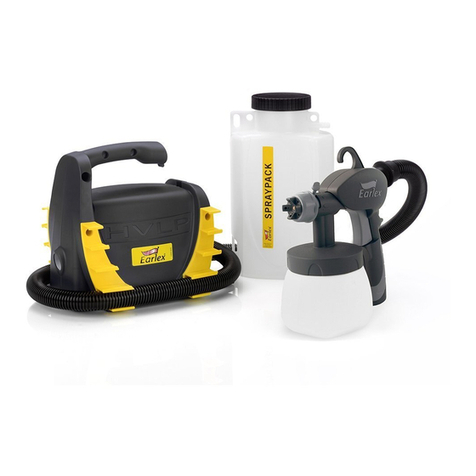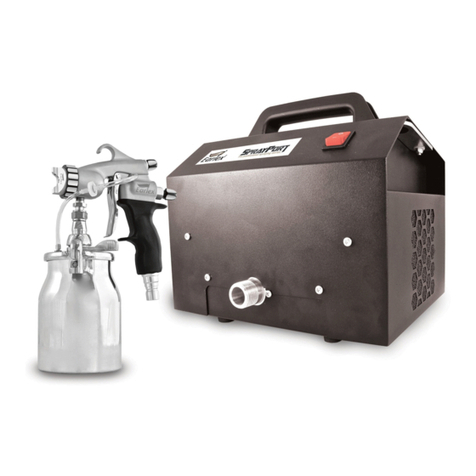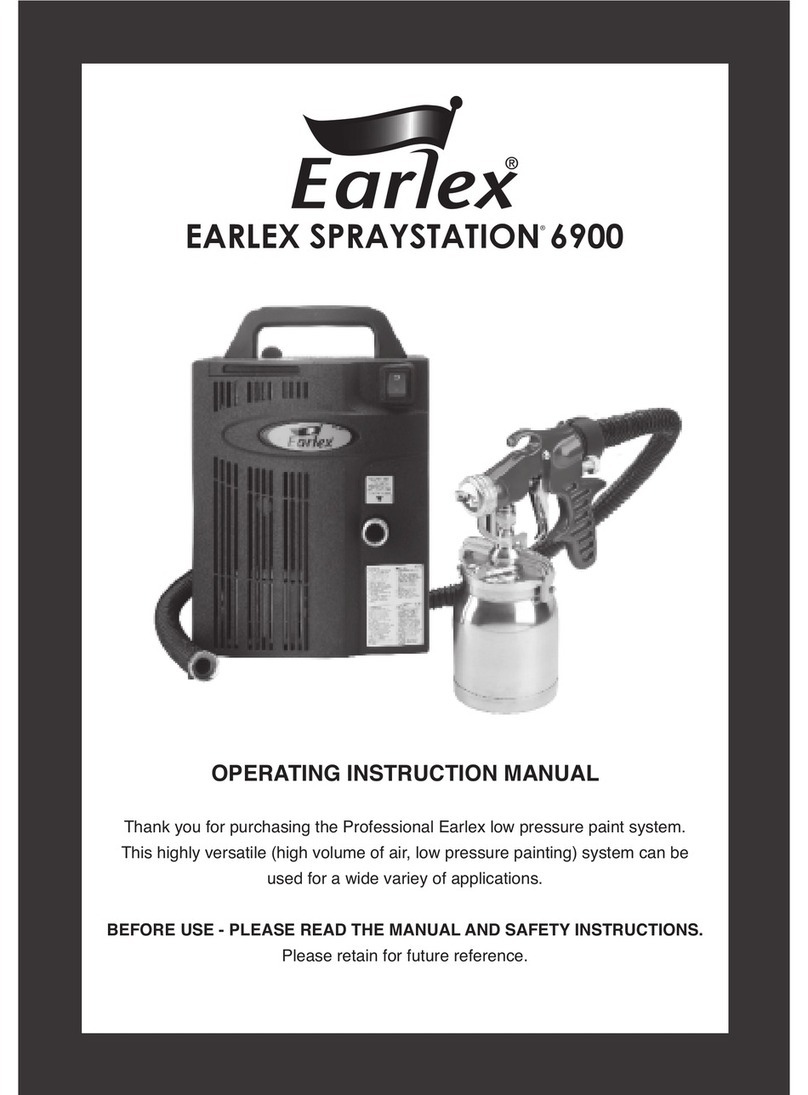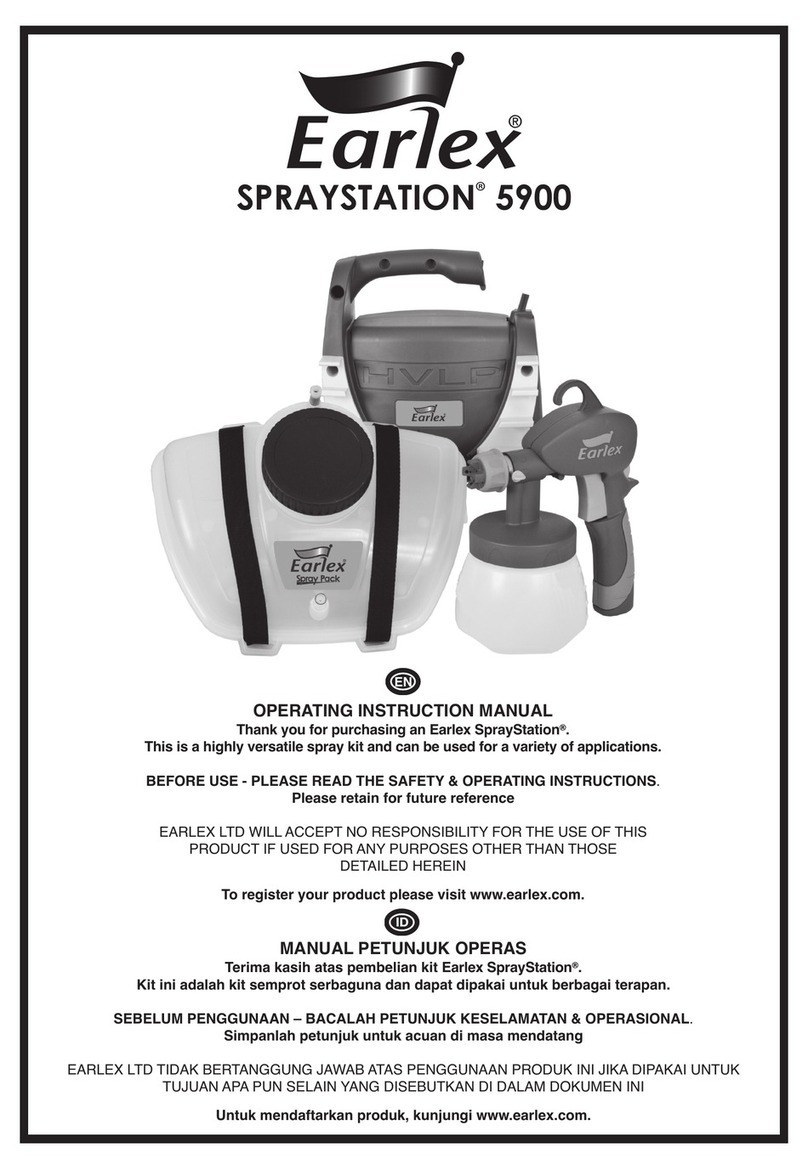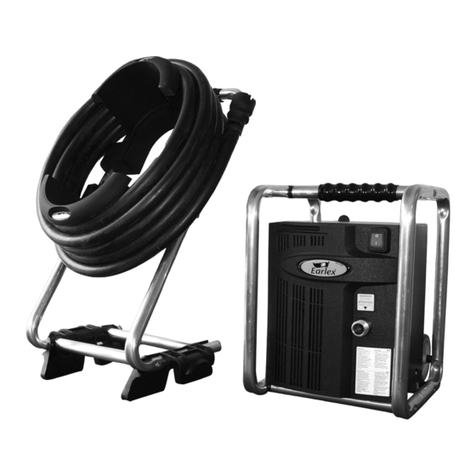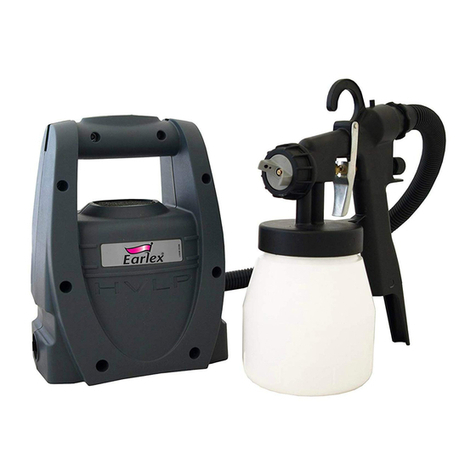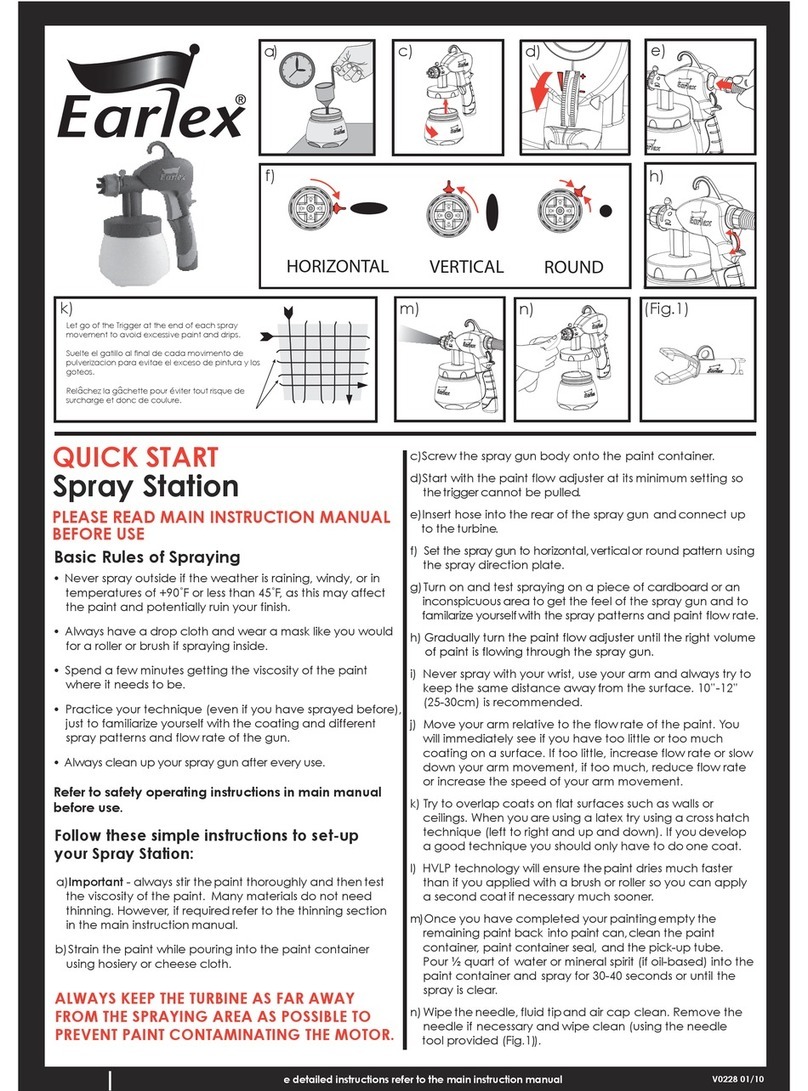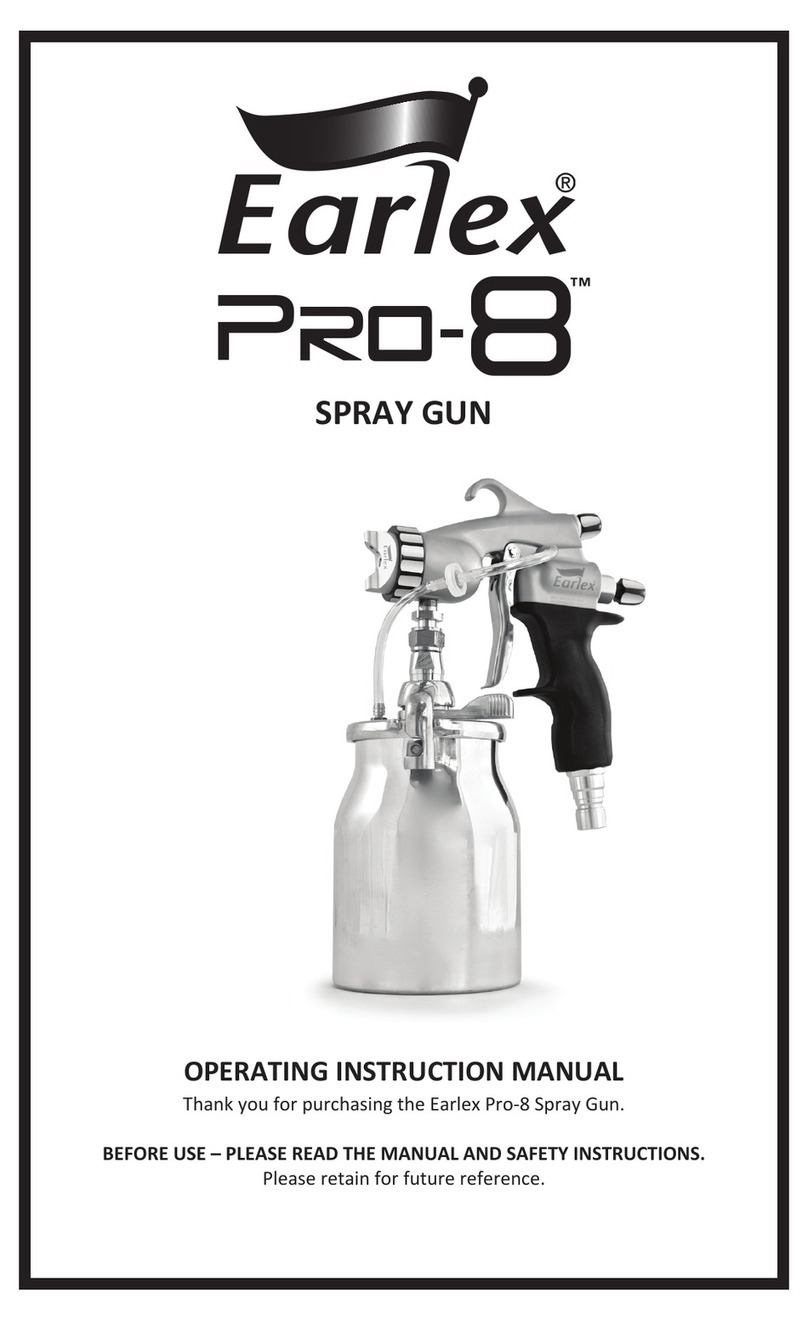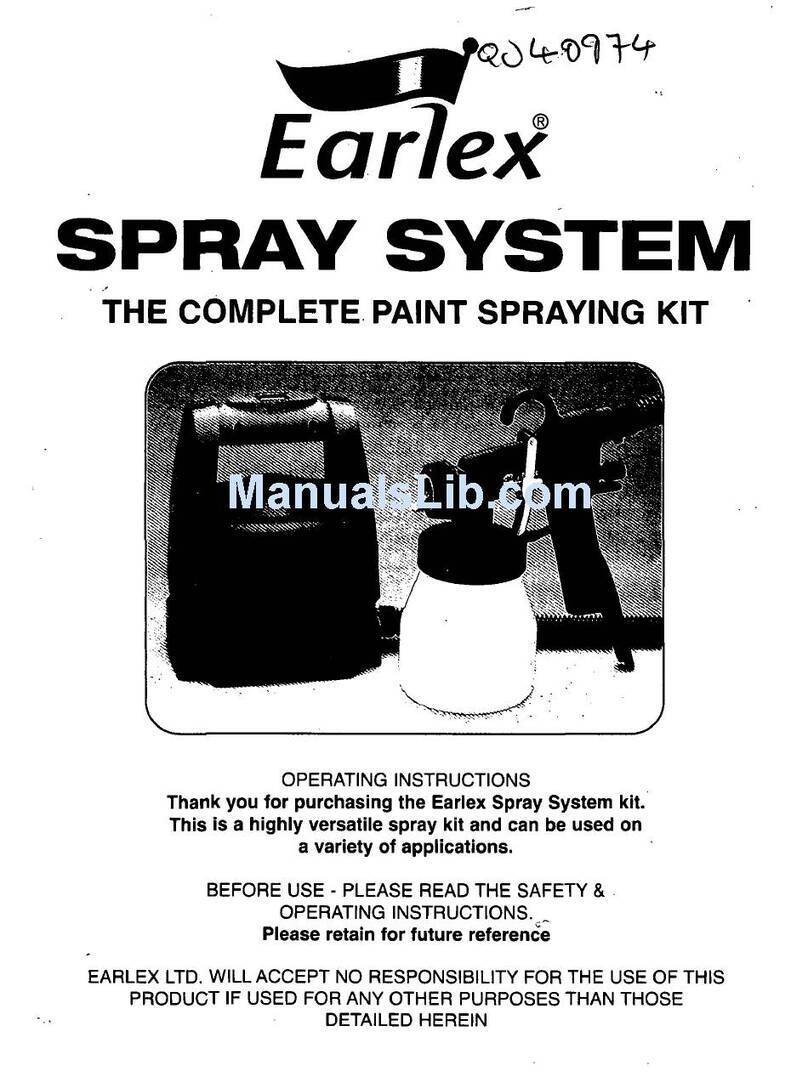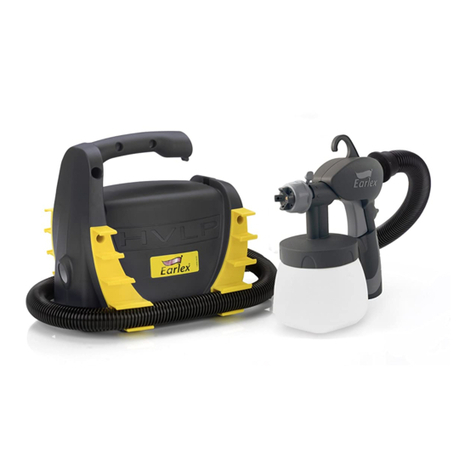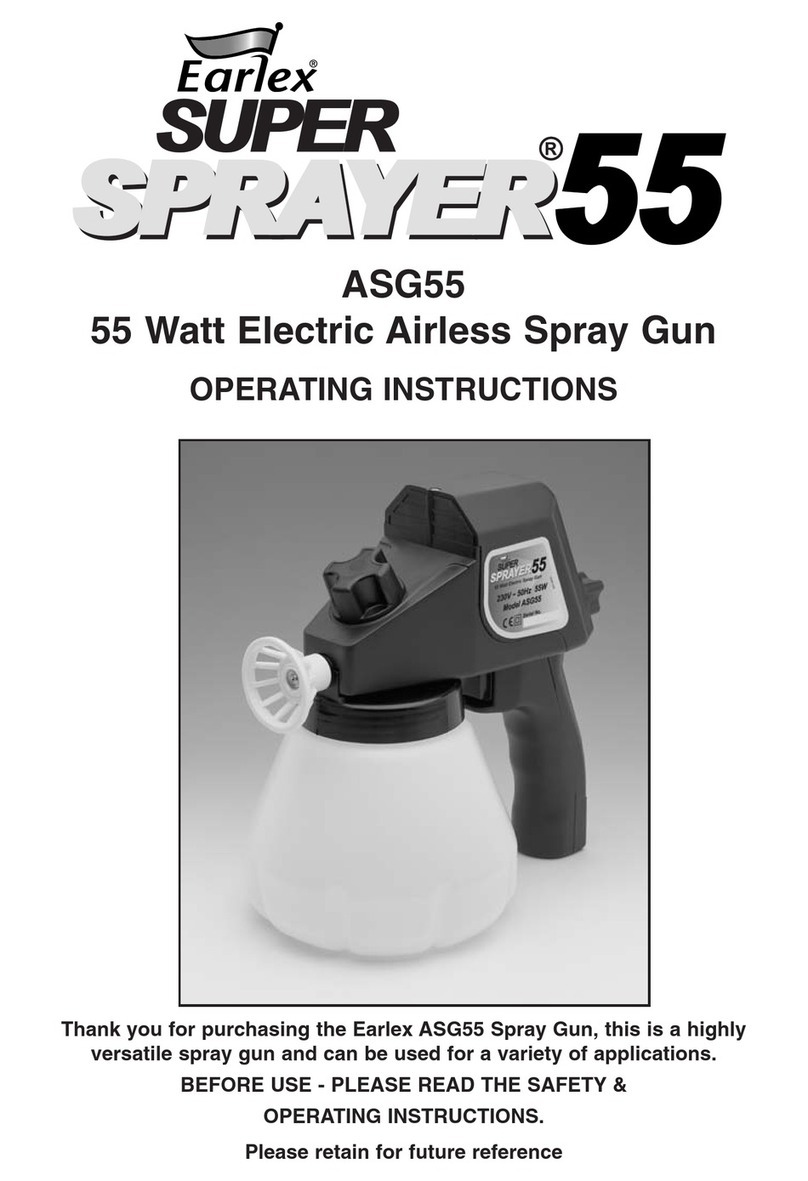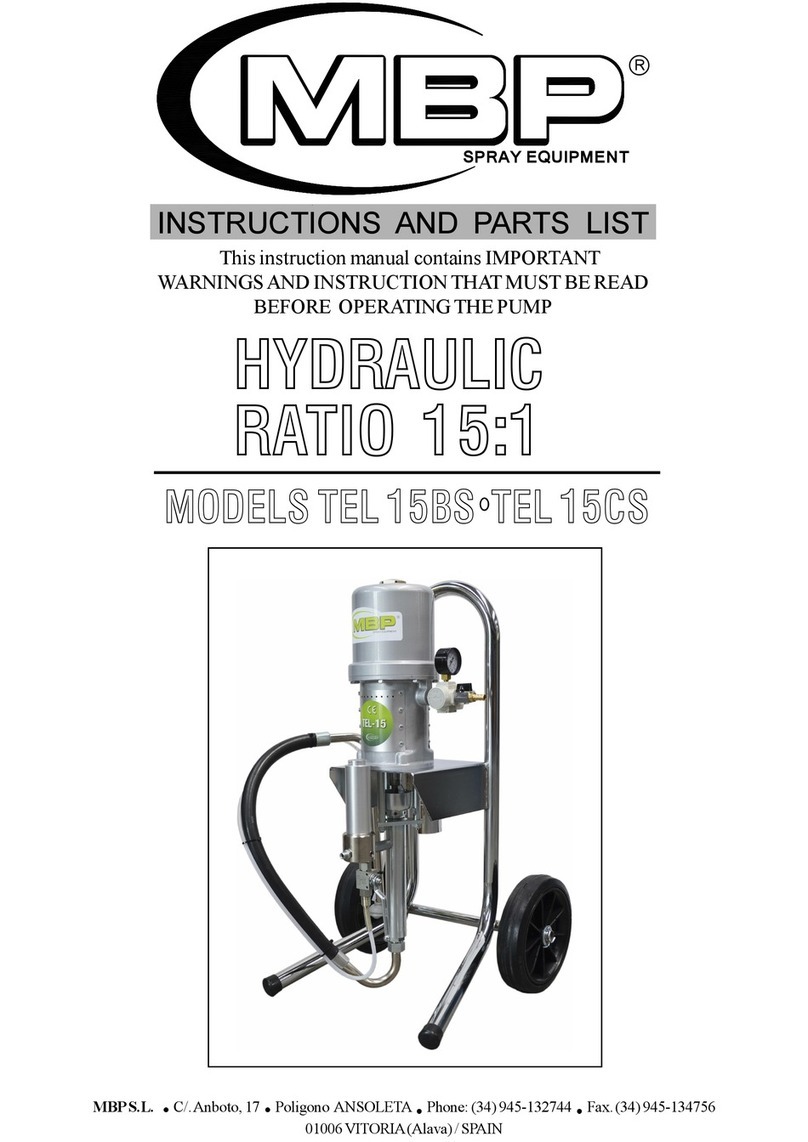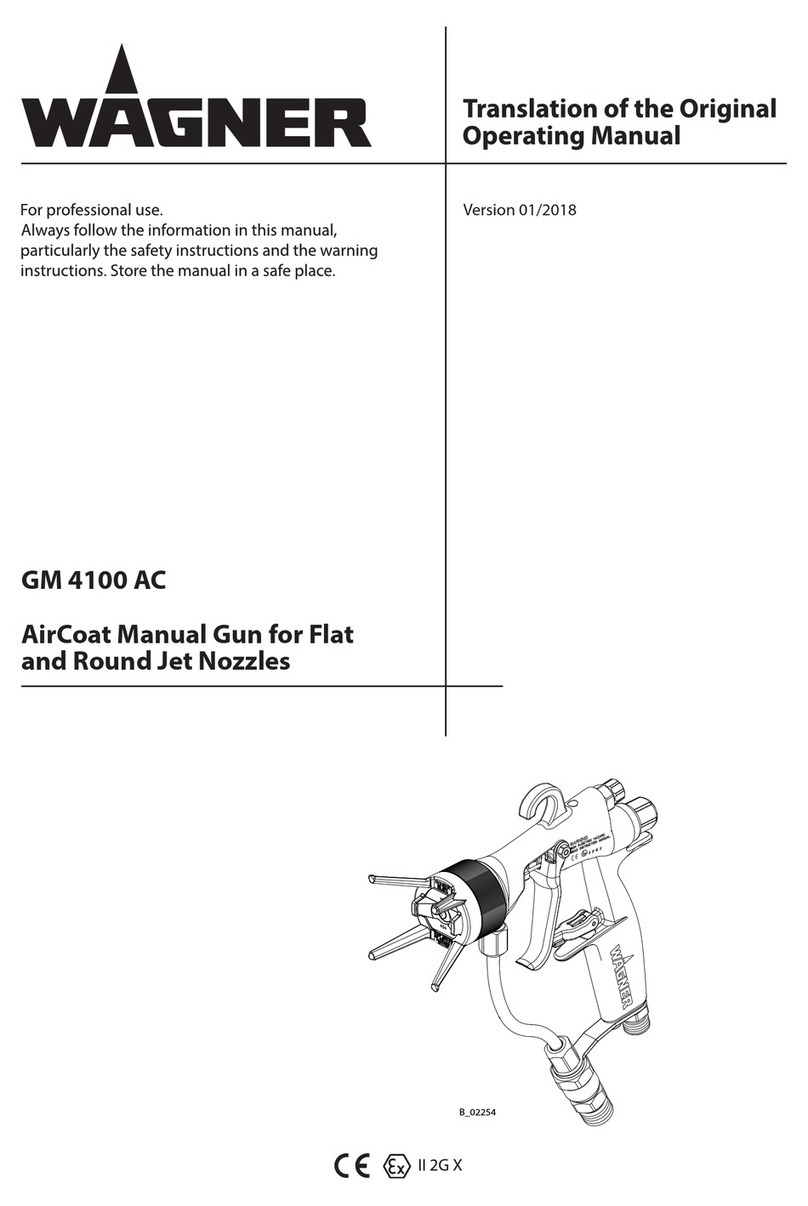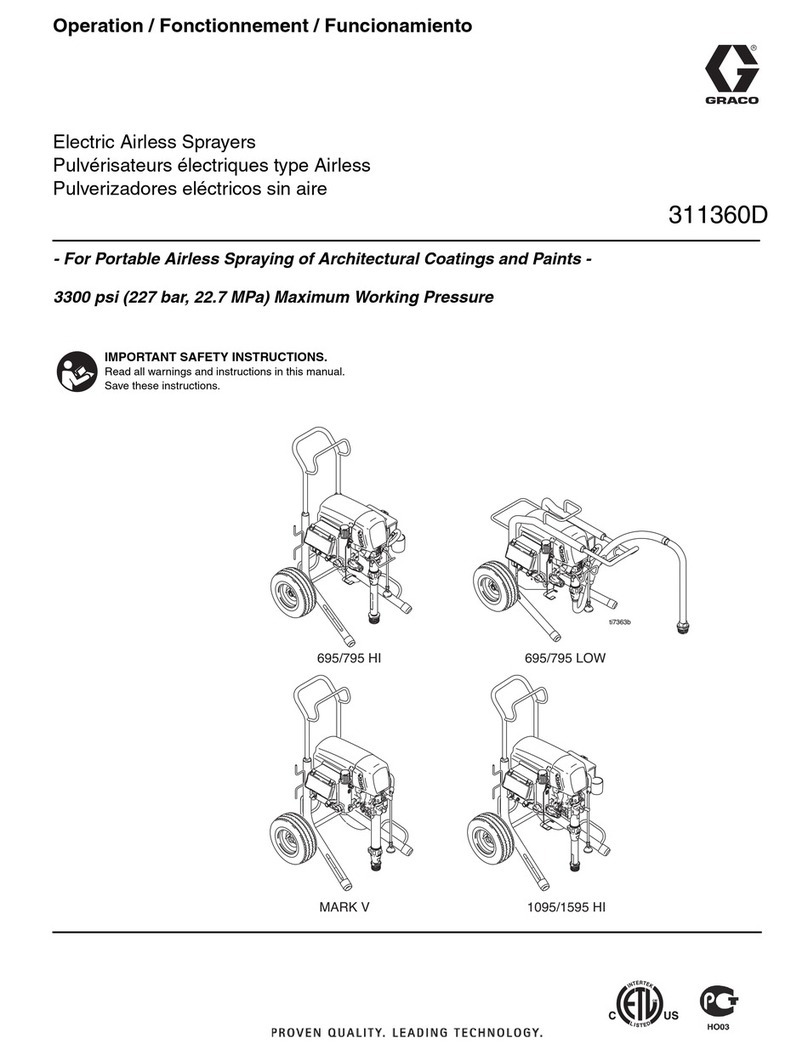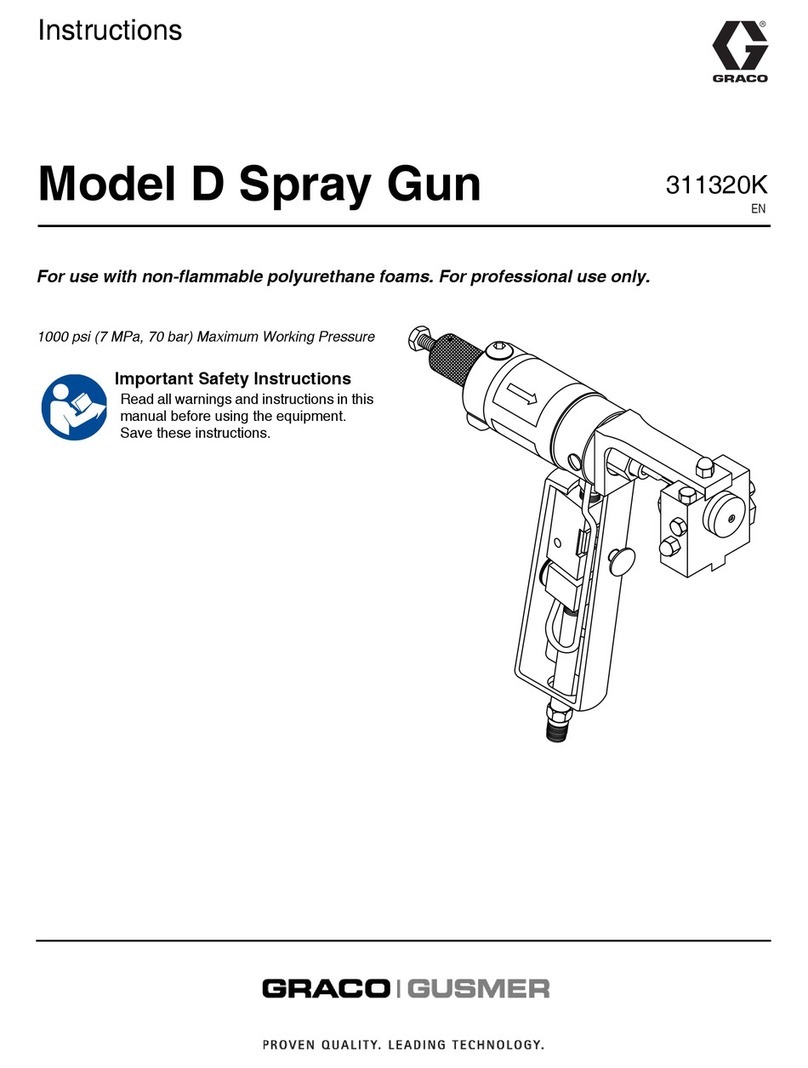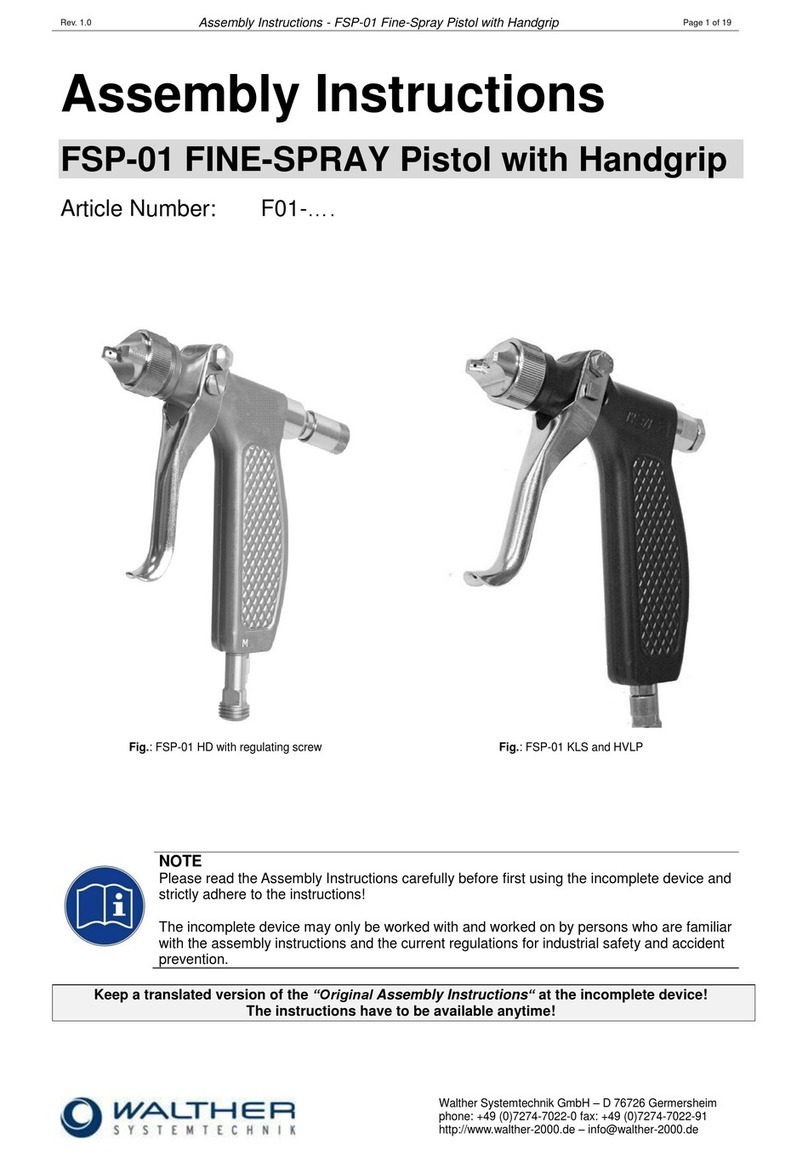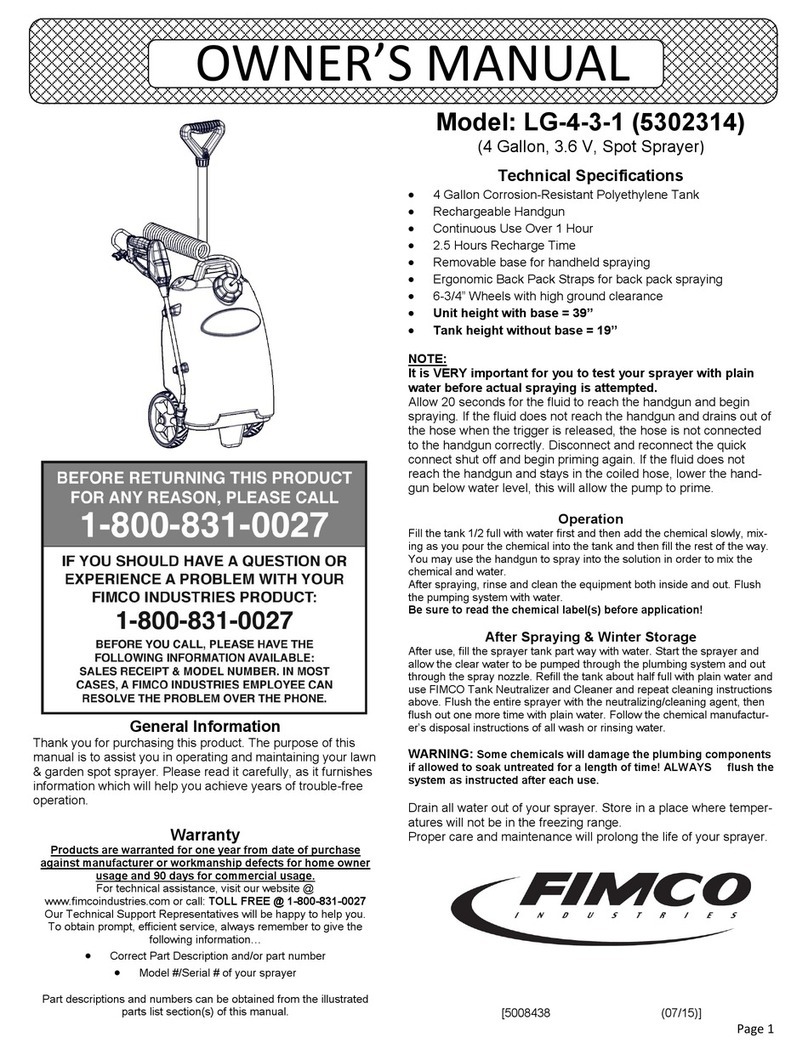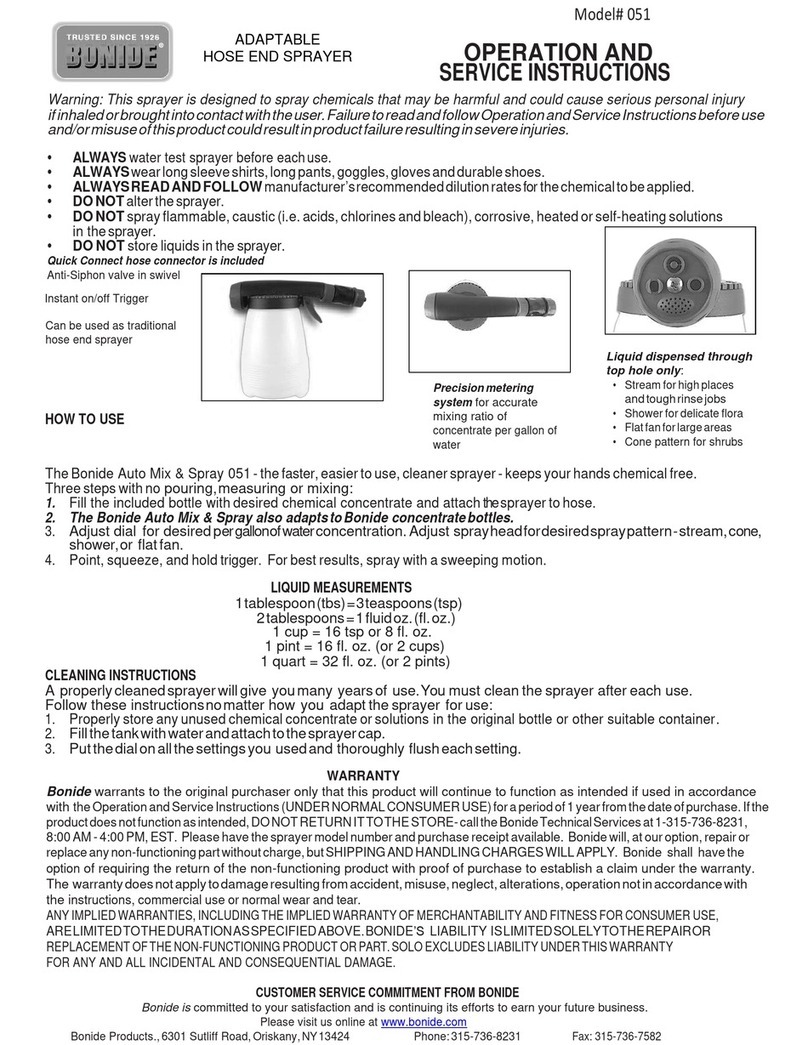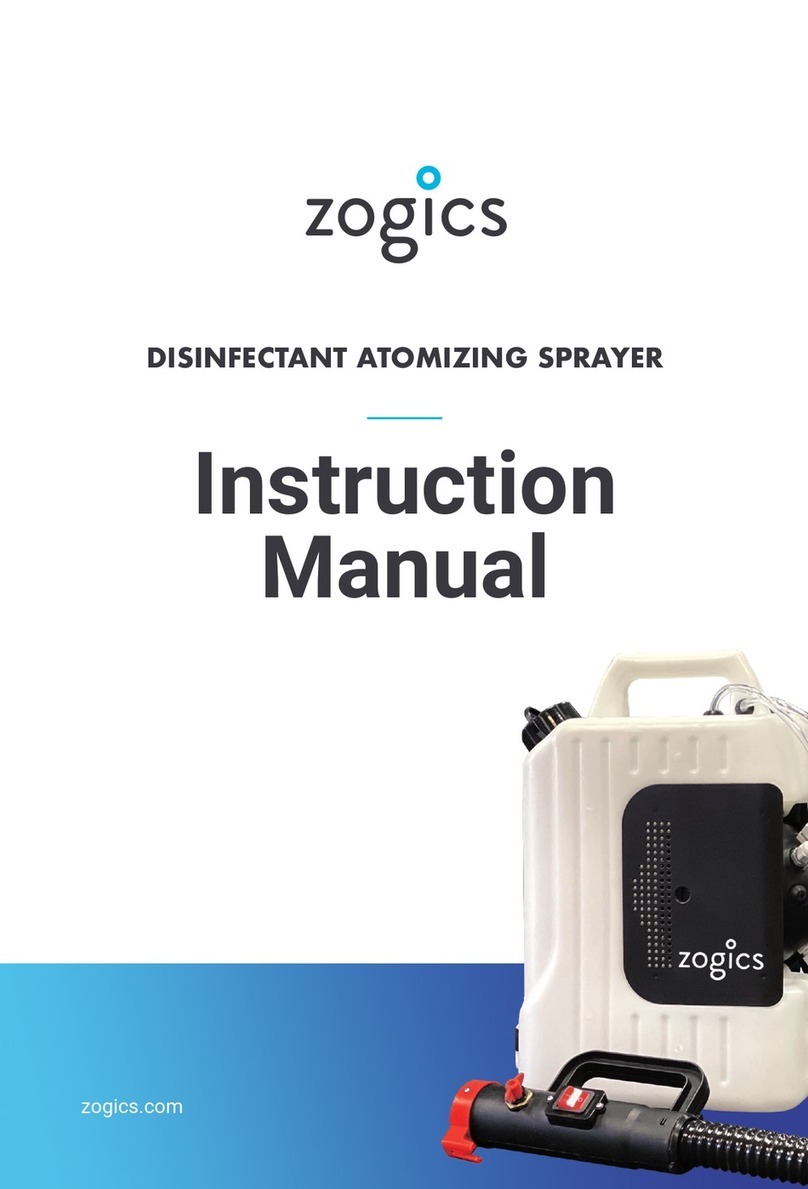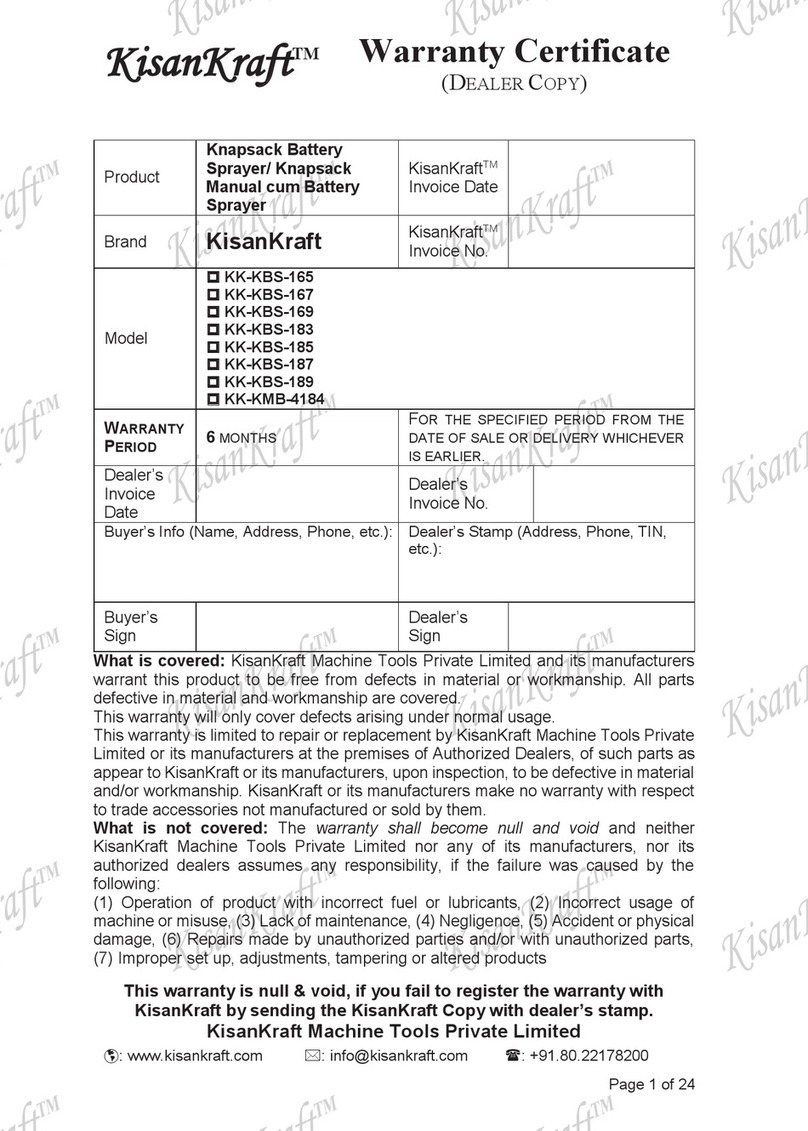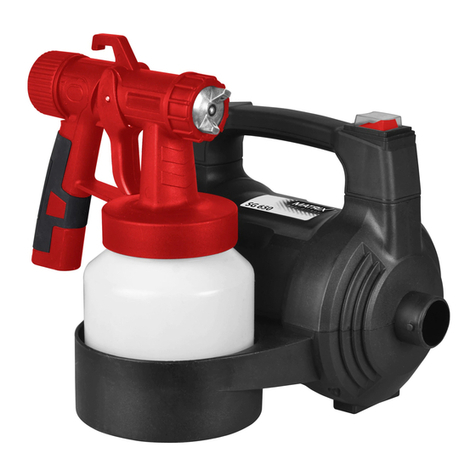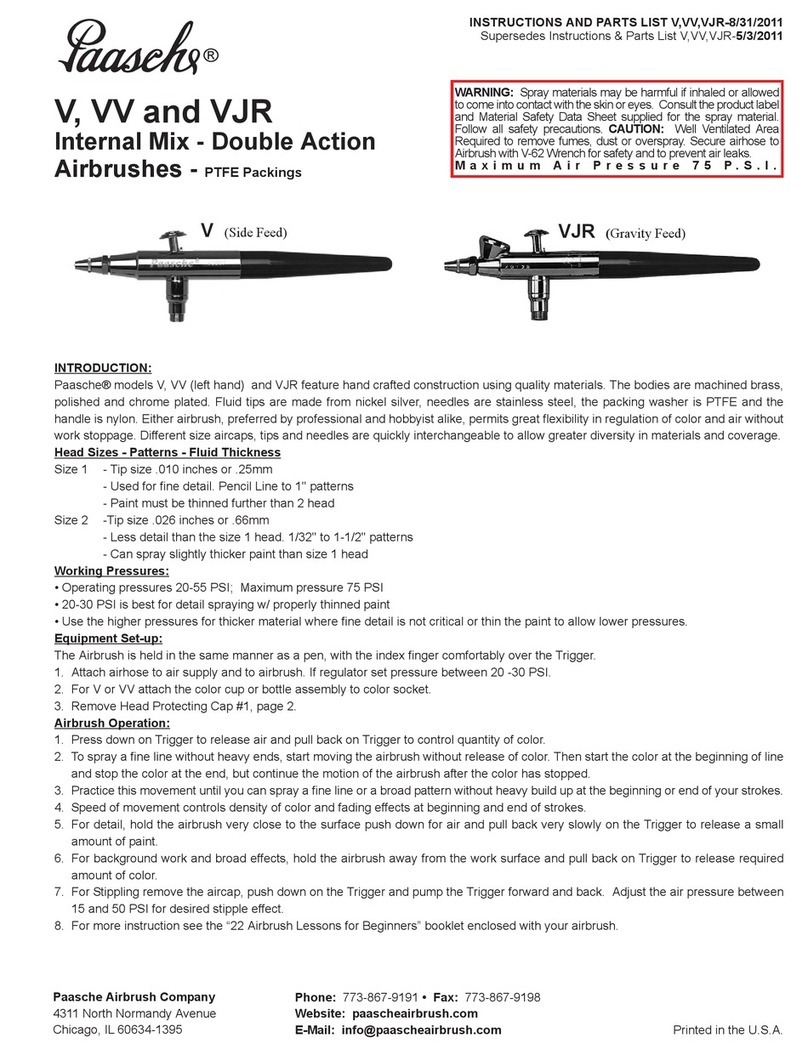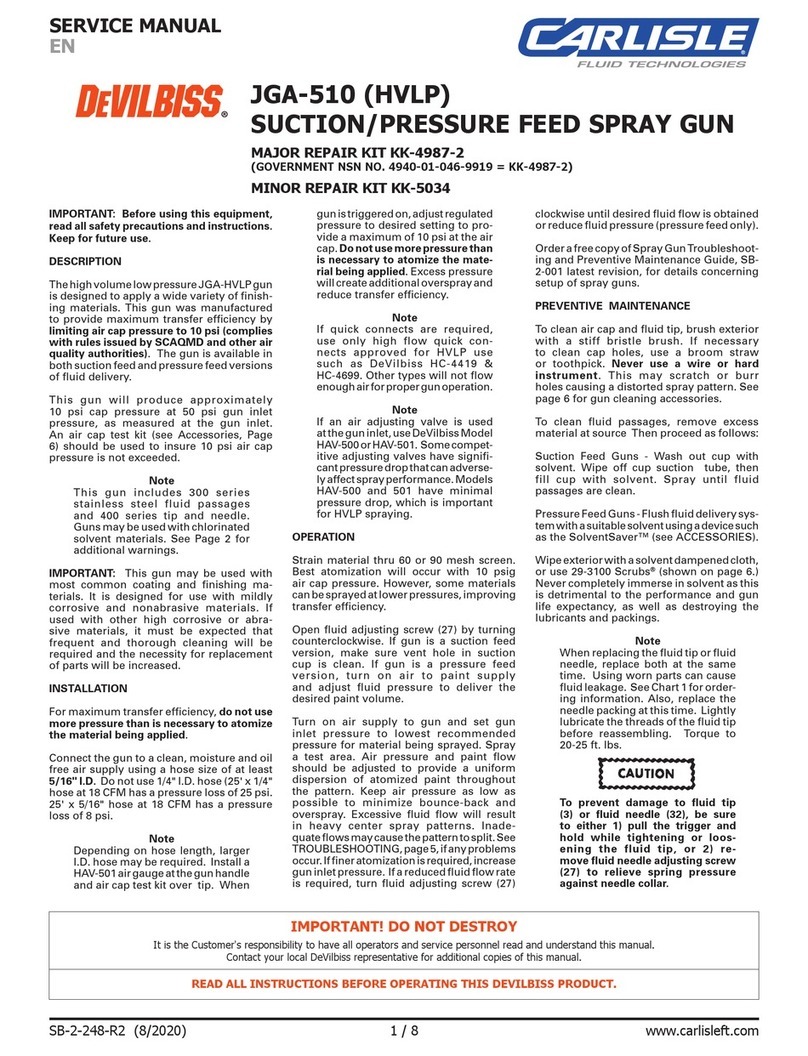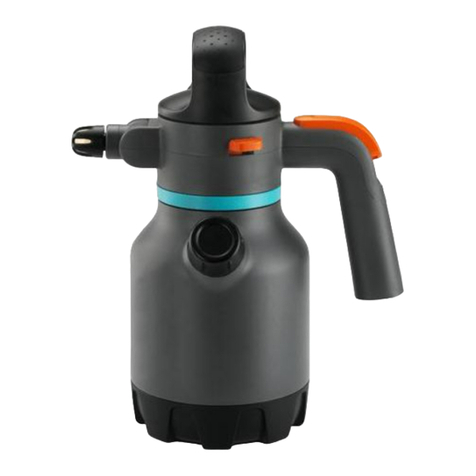
8
uestions? Call toll free: 888-783-2612
1. To obtain the best results always keep your spray gun level and spray equally fro side-to-side or up-or-down
fro the surface. Avoid spraying at an angle as this will lead to runs on the surface (Figs.5-7).
2. Let your ar control the side-to-side ove ent rather than your wrist as this will aid even paint distribution over
the whole area.
3. Do not tip the spray gun ore than a 45˚ angle when the otor is switched OFF.
Paints, varnishes, wood treat ents, etc, are anufactured using a variety of aterials and have widely different
viscosities. You ay find that the 0.08” (2.0 ) dia fluid tip and needle supplied with this spray gun does not enable
you to spray your particular choice of finish exactly as you would like. In such cases a change of fluid tip and needle
size will probably solve this proble . In general, thicker, ore viscose aterials are best sprayed through a larger
fluid tip to give best coverage. Thinner, less viscose aterials are best sprayed through a s aller fluid tip.
To allow for these variations fluid tip and needle sets are available as optional extras in 0.04” 1.0 ) dia, 0.06”
(1.5 ) dia and 0.10” (2.5 ) dia (See page 6).
TECHNI UE
FLUID TIPS AND NEEDLES
1. Evenly control the speed of ove ent of the spray gun. A fast speed will give a thin coat and a slow speed will
give a heavy coat.
2. Only apply one coat at a ti e. If a further coat is required follow the paint anufacturer’s instructions for drying
ti es.
3. If spraying s all areas or objects keep the Fluid Adjusting Screw (12) setting low as this will avoid excessive use
of paints and will ini ise overspray.
4. When spraying large areas or objects, it is best to use a criss-cross pattern, either fro left-to-right then up-or-
down or vice-versa. This will ensure axi u coverage. Let go of Trigger (25) at the end of each spray ove ent
to avoid excessive paint and drips (Fig.4).
5. Avoid stopping and starting when spraying as this can lead to too uch or not enough aterial on a surface.
6. To ensure edges are covered, co ence spraying just to the side of area being sprayed.
7. CLEAN SPRAY GUN AFTER EVERY USE (SEE CLEANING INSTRUCTIONS).
HELPFUL HINTS
CLEANING INSTRUCTIONS
THE SPRAY GUN SHOULD BE THOROUGHLY CLEANED AND THE GLAND WASHERS LUBRICATED,
IMMEDIATELY AFTER EACH USE. IF THE PAINT DRIES INSIDE THE GUN CLEANING WILL BE MUCH MORE
DIFFICULT AND MAY RENDER THE GUN INOPERABLE. THIS IS NOT COVERED BY THE WARRANTY.
Flush out the residue paint fro the spray gun, as follows:
• Re ove the Paint Container (17) fro the spray gun.
• Pour any residual paint into its original container for future use.
• Use a cloth soaked in thinners to wipe out excess paint fro the container, the underside of the Lid (20) and the
Gasket (19).
• Pour a s all quantity of clean thinners into the container, refit the container to the spray gun and shake the gun
lightly.
• Now spray all of the thinners through the gun.
• Repeat this each ti e using clean thinners until there is no trace of paint in the thinners being sprayed.
To thoroughly clean the re ainder of the spray gun, re ove all working parts as per the exploded parts view on page
4 as follows:
• Loosen and re ove Air Cap Ring (1), Air Cap (2) and Air Distributor Plate (3).
• Unscrew Adjusting Screw (12) and pull out Fluid Needle (9) and Spring (11).
• Using Spanner (27) supplied re ove Fluid Tip (4) and Fluid Tip Seal (5).
PAINT VOLUME
The volu e of paint sprayed is easily adjustable (Fig.3). Co pletely close Fluid Adjusting Screw (12) by turning
clockwise as far as it will go. Whilst pulling the Trigger (25), begin turning the Fluid Adjusting Screw (12)
anticlockwise until the volu e of paint you require is obtained. If the spray contains too uch paint turn the Fluid
Adjusting Screw (12) clockwise to reduce it.
Once you have set the spray pattern and the paint volu e, you are ready to spray.
